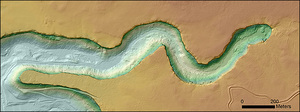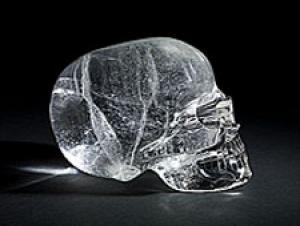Martian canyons may have been sculpted by "megafloods" that took place on the red planet more than three billion years ago, writes Roger Highfield.There is abundant evidence for Mars being warm and wet in the past but today it appears relatively dry, with water ice confined to the planet's polar caps.
Now new evidence of Martian floods in the distant past has come from a study of a canyon in Idaho, America, that from space looks like a blue snake.
Idaho's Box Canyon is similar to canyons on Mars and may shake up our view of how water shaped the landscape on the Red Planet, reports a study in the journal
Science.

|
| ©ASU
|
| High-resolution topographic map of Box Canyon, Idaho. Image courtesy of Michael P. Lamb
|

